| We camped at Anastasia State Park which is about three miles
south of St Augustine. This is the Bridge of Lions which carries the road
from the park into the town. |  |
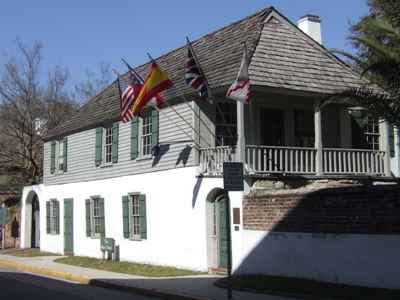 | Florida was
first claimed by Ponce de Leon for Spain in 1513. St Augustine was first
settled by Pedro Menendez in 1565 with 700 colonists. This makes it the
oldest continually inhabited European settlement in North America. Frances
Drake sacked the town in 1586. Florida finally became English in 1763 but
in 1784 was returned to the Spanish who finally ceded it to the US in 1821. The
town is full of old buildings but this is the oldest of them. |
| This imposing building is St Francis Barracks and is now used
by the Florida National Guard. | 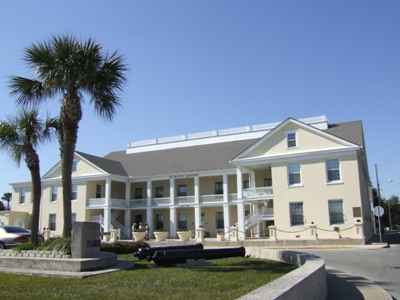 |
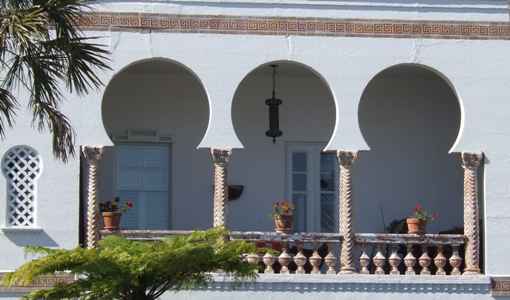 | There is a
very Spanish style to many of the houses. This is perhaps more Moorish than
most. |
| Most of the older houses have balconies like this. This building is
now used as an inn so I guess they don't still sleep on the balcony in the
summer. | 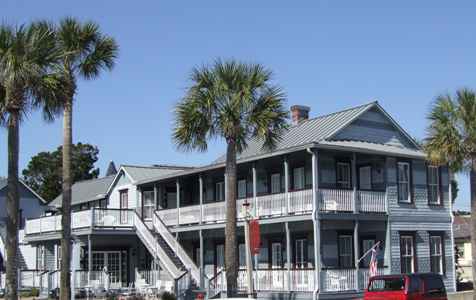 |
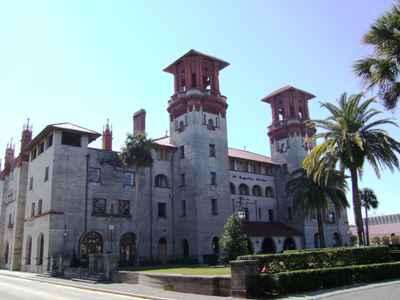 | Many of the
most impressive buildings were built or bought by Henry Morrison Flagler. This was
originally the Alcazar Hotel, part of Flagler's chain of hotels. It was
bought and restored in 1947 by O C Lightner, having been empty since 1932. He
gave it to the city as a museum to house his collection of Victorian
memorabilia. Today it has been restored again and now serves as the city
hall as well as a museum. |
| This also was originally built as a hotel by Henry Flagler,
whose statue stands at the entrance. It is now home to a college. You can get
guided tours around it. It is a very impressive block of buildings. | 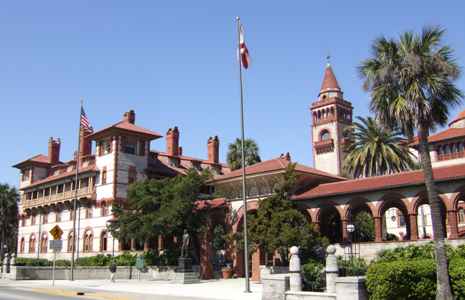 |
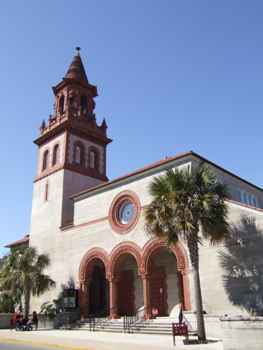 | There are many
churches. This one was built in 1887 in the Spanish Renaissance Revival
style of architecture by Henry Flagler using the same architects who
designed the Alcazar Hotel. We expected it to be a Catholic church but it is
in fact the Grace Episcopal Methodist Church. It was built to replace the
Olivet Church which was demolished to make way for the Alcazar Hotel. |
| This is a very common southern style of house for the well-off
but ordinary people. We have seen it in all of the southern states we have
passed through. | 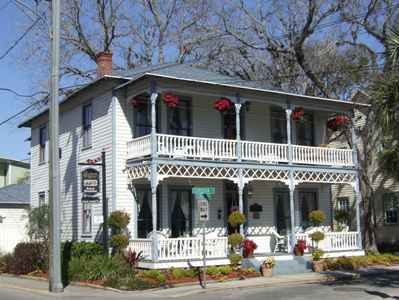 |
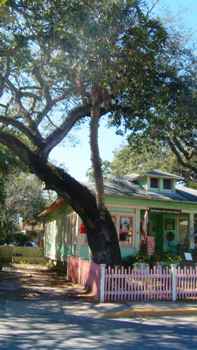 | Occasionally
you spot some odd things like this live oak tree. Except that the 'branch growing
out of the lower trunk is in fact a palm tree which has been completely encircled
by the oak tree. |
| Castillo de San Marcos is the oldest stone-built castle in the USA. It
was built by the Spanish between 1672 and 1695. In 1702 the Carolinians
burnt the town but could not take the fortress. | 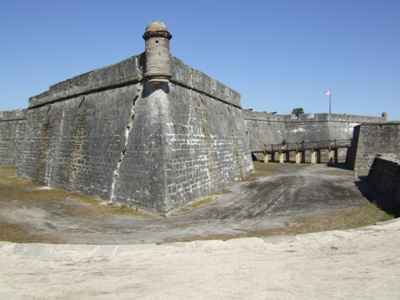 |
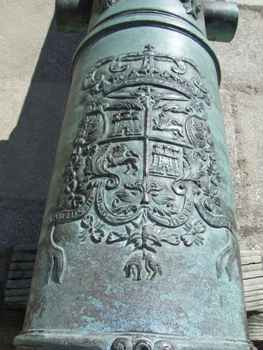 | It seems odd
that so much effort should go into ornamentation on the gun barrels. But
most have elaborate coats of arms of their owners or founders. |
| Other artifacts like this shell drinking bowl are much more fragile
and so less likely to exist in one piece. This is not an original but a
modern copy of the style of the period. It is a replica of a bowl recovered
from a burial mound in Oklahoma. It is painted on the shell of a Florida
lightening whelk which was used commonly for drinking a tea based upon the
roasted leaves of the cassina plant. Hence the 'black' drink. | 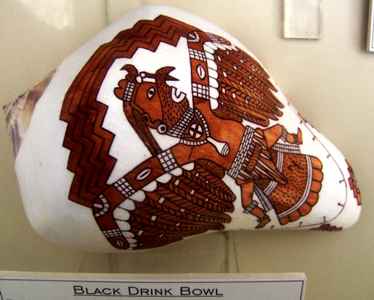 |
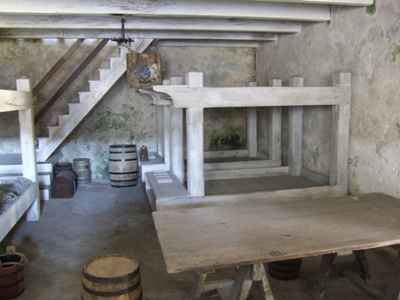 | The walls
contain rooms of which this is one. It is known as the British Barracks.
Each bunk slept four men, two above and two below, on straw palliasses. There
are racks on the
end for four muskets and hooks for four coats. |
| There are a few other artifacts from the period such as these
knives and bayonets. Top is a dirk from the late 1600s used both as a
weapon and an everyday tool. It is of Spanish make. In the middle is a plug
bayonet which was inserted in the barrel of the musket. At the bottom is a
British 'Regulars' bayonet. | 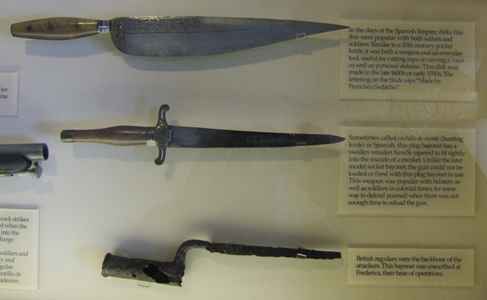 |
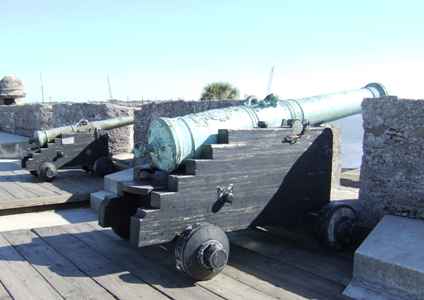 | There are over
a dozen cannon in the fort all of different periods and sizes. Most are 20 pounder long guns which would fire a cannon ball or grape or chain shot on a
flat trajectory. |
| There are also mortars which shot on a high trajectory. These
are all bronze and have gained a green patina over the years from the
copper in the metal. This is a Spanish-made 15 inch mortar cast in 1724 in
Barcelona with a range of 2100 yards | 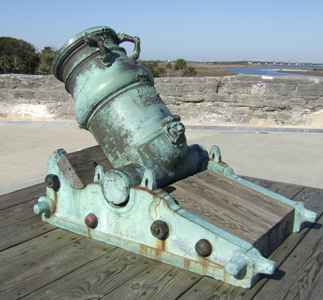 |
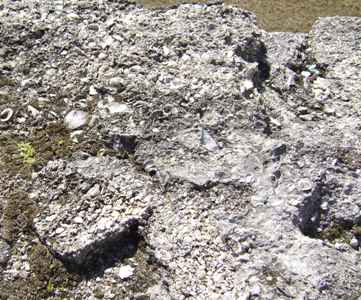 | The castle and
many of the houses in the town are built of coquina which is a
limestone with a high proportion of seashells in the stone. It was very good
at resisting cannon balls since it is relatively soft, so it didn't shatter
when struck. The corollary is that it wears away easily, so visitors are
enjoined not to even touch the walls, let alone sit or climb on them. |
| So much of the southern coast of the eastern US is really shallow
and lined with shoals and sand banks so that it was, and still is, dangerous
for shipping. Hence there is a significant series of lighthouses, all
slightly different in form or decoration, and thus easily recognisable to
the enthusiast. This is the St Augustine lighthouse, jusr near the entrance
to the campsite. | 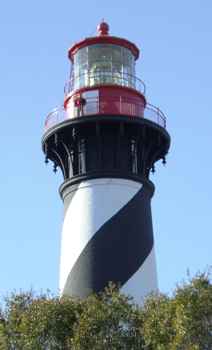 |
|